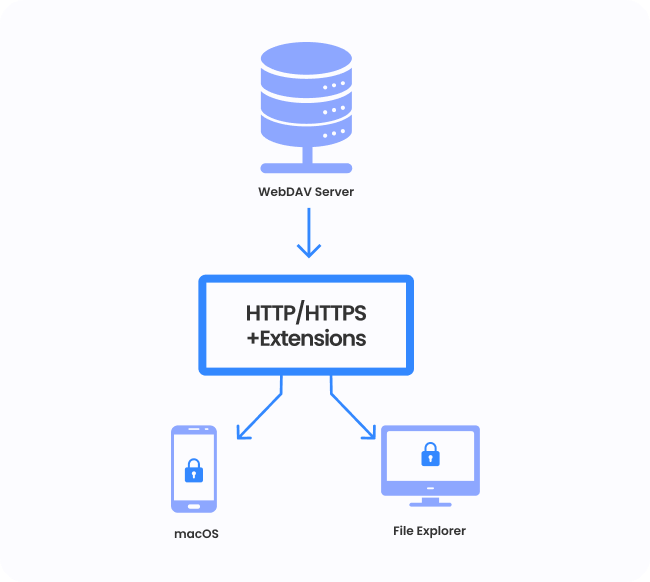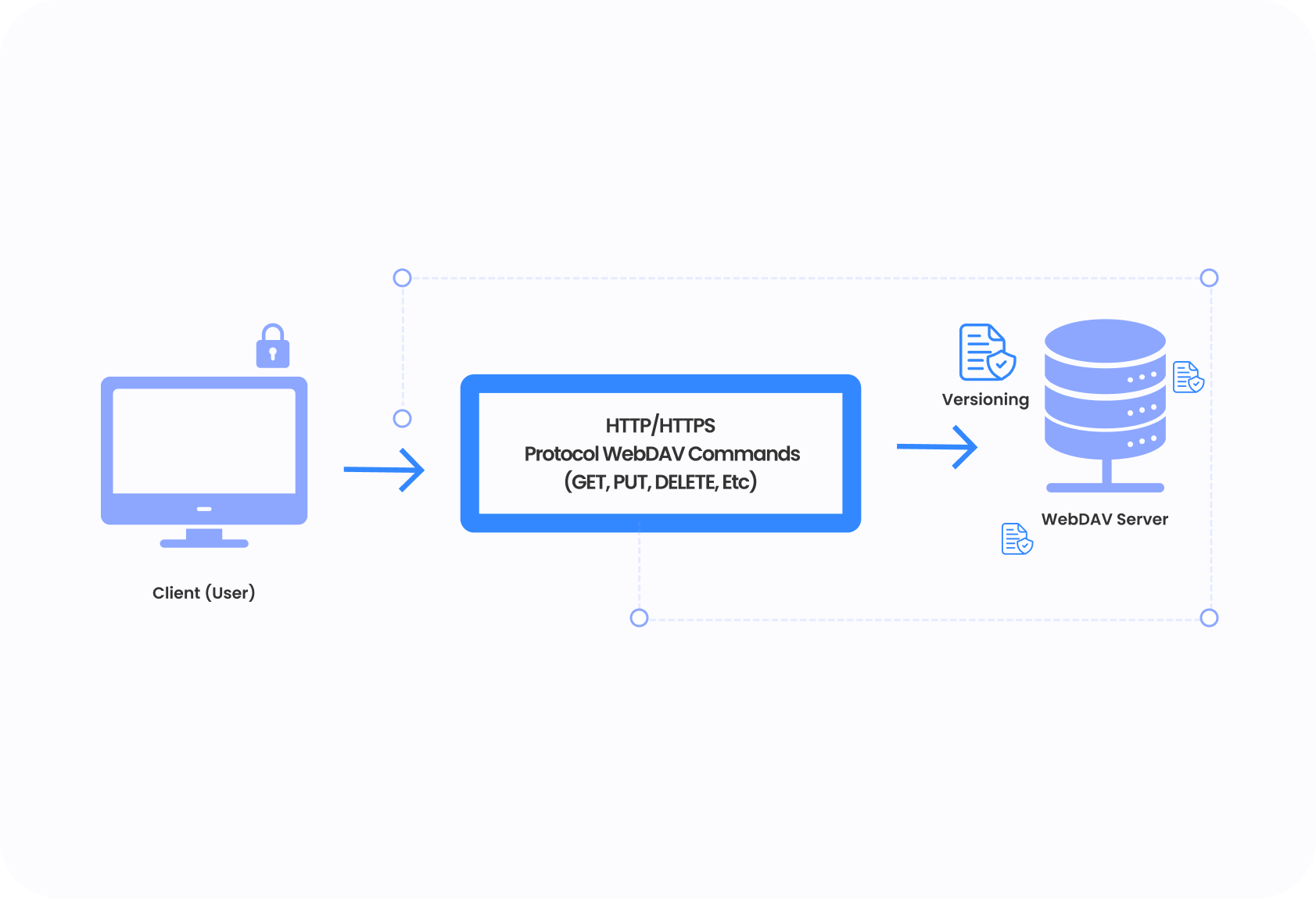Understanding WebDAV:
The Protocol for Remote File Management
The WebDAV protocol is a popular option for accessing files remotely as it runs over the http/https protocols which are accessible from any location. Web Distributed Authoring and Versioning (WebDAV) is an extension of the HTTP protocol to allow end users and 3rd party applications to view and edit files — both personal and through company shares—located in the cloud.
WebDAV is a protocol extension of HTTP that allows collaboration and editing content directly using HTTP as define in RFC 2518, RFC 4918. WebDAV began in 1996 as part of the World Wide Web Consortium discussion on distributed authoring.

Trusted by Enterprises, Governments, and Universities Worldwide
Leading Organizations Trust MyWorkDrive
Benefits of Using WebDAV
There are several benefits to using WebDAV, including:
Remote Access
With WebDAV, users can access their files from anywhere with an Internet connection. This is especially useful for teams that need to collaborate on projects or individuals who work remotely.
Increased Productivity
WebDAV enables users to quickly and easily access and edit their files, without having to transfer them to their local computers. This can save time and increase productivity, especially for users who frequently need to access large files.
Improved Collaboration
WebDAV supports versioning, allowing multiple users to make changes to the same file. This makes it easier for teams to work together on projects, as everyone has access to the latest version of the file.
Enhanced Security
WebDAV uses HTTPS to transfer data, which provides an additional layer of security. This helps to protect sensitive files and data from unauthorized access.
How Does WebDAV Work?
WebDAV works by using the HTTP or HTTPS protocol to transfer files between a client and a server. The client sends a request to the server to access, modify, or delete a file, and the server responds with the appropriate data. WebDAV also supports versioning, meaning that multiple users can make changes to the same file and the server will keep track of all the different versions, allowing users to roll back to an earlier version if needed.

WebDAV Server Setup,
Limitations, and Alternatives

To use WebDAV, you’ll need to set up a server that supports the protocol. This can be done using a variety of methods, including:
- Setting up a dedicated WebDAV server
- Using a cloud-based WebDAV service
- Installing a WebDAV plugin on an existing web server
Once you have a WebDAV server set up, you’ll need to connect to it using a client that supports the protocol. There are several free and paid client applications available for both desktop and mobile devices.
Historically IT Departments have had the following issues when attempting to deploy a WebDAV Server in their on-premise or cloud infrastructure:
- Security Concerns and no support for two factor authentication or single sign-on
- Poor Client Support on Windows & Mac's – The built-in WebDAV client on Windows by default limits file sizes to 30 MB
- Lack of Integration into Windows Active Directory and NTFS Permissions on File Shares
- Manual provisioning requirements for adding new users/groups or home drives
- File Names and Special Characters not recognized
- File Size Limitations
- Slow speeds
MyWorkDrive solves these issues by offering an WebDAV alternative through our easy to install and configure Windows Server Add-On Software. MyWorkDrive allows companies to convert an ordinary Windows File Server to a WebDAV Server. MyWorkDrive offers the same benefits of WebDAV without the security risks or support challenges. Since our apps do not utilize WebDAV, companies may disable WebDAV Server completely and only support WebDAV connections as needed – depending on business and security requirements.
- Secure Web Browser Portal for File Remote Access
- Collaborate and Edit Documents in Microsoft Office Online
- Mapped Drives using MyWorkDrive Mapped Drive Client
- Two Factor Security (2FA)
- Optional Azure AD/Okta/SAML/ADFS Authentication
- Optional WebDAV client support
- HTTPS SSL standard firewall ports allow anywhere access
- Mobile iPhone, iPad & Android Apps
Whatever methods enterprises choose - WebDAV or MyWorkDrive native apps and our Web File Manager, MyWorkDrive makes enabling remote file access faster, easier and more secure.
MyWorkDrive is written with the Enterprise Windows Systems Administrator in mind - everything is Windows Based, utilizes IIS Web Server and is written in .net. Our solution is designed and engineered by San Francisco based MyWorkDrive LLC founded by Intivix.com engineers with over 25 years of real-world Windows File Server Remote Access and SSL VPN systems administration experience.